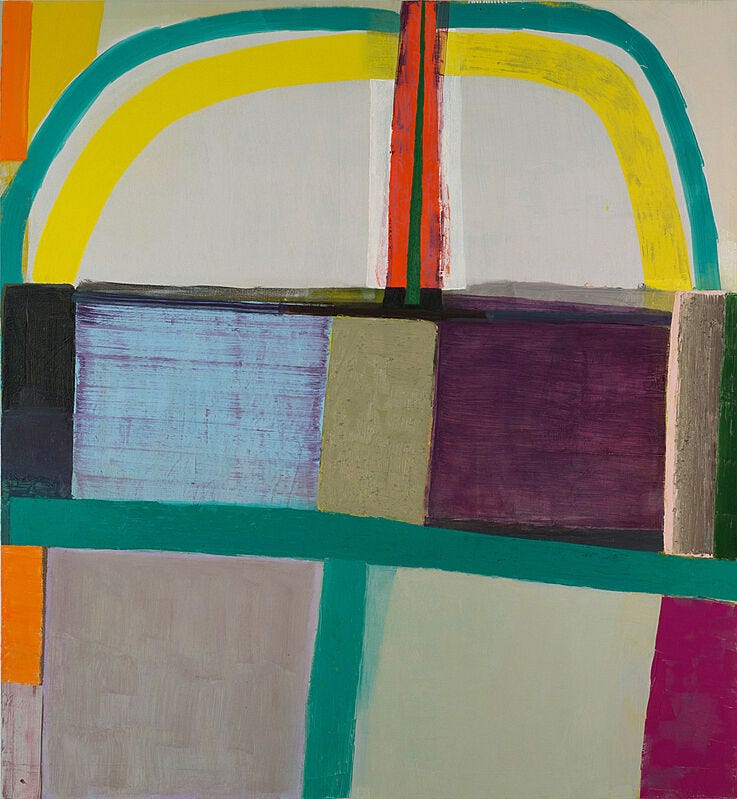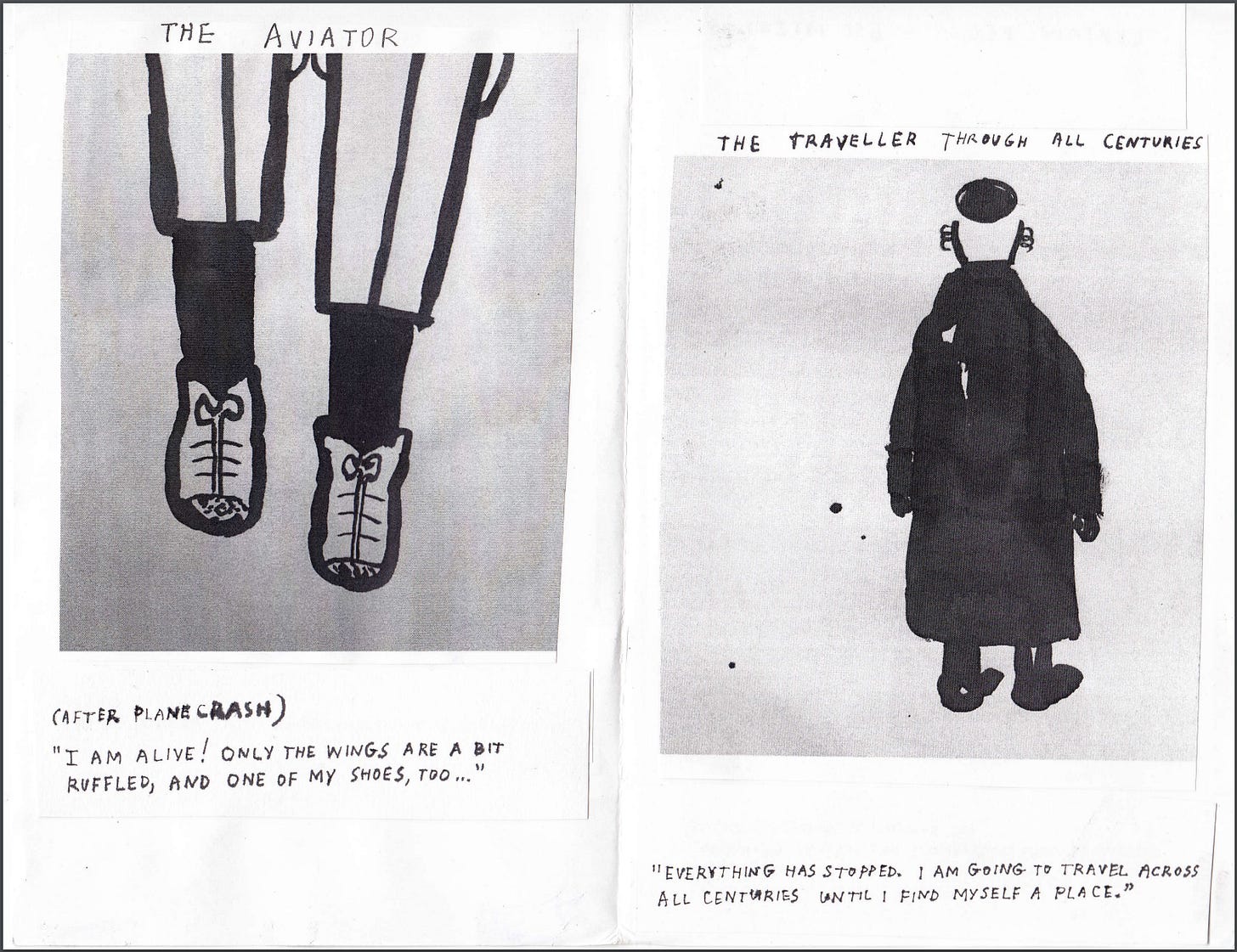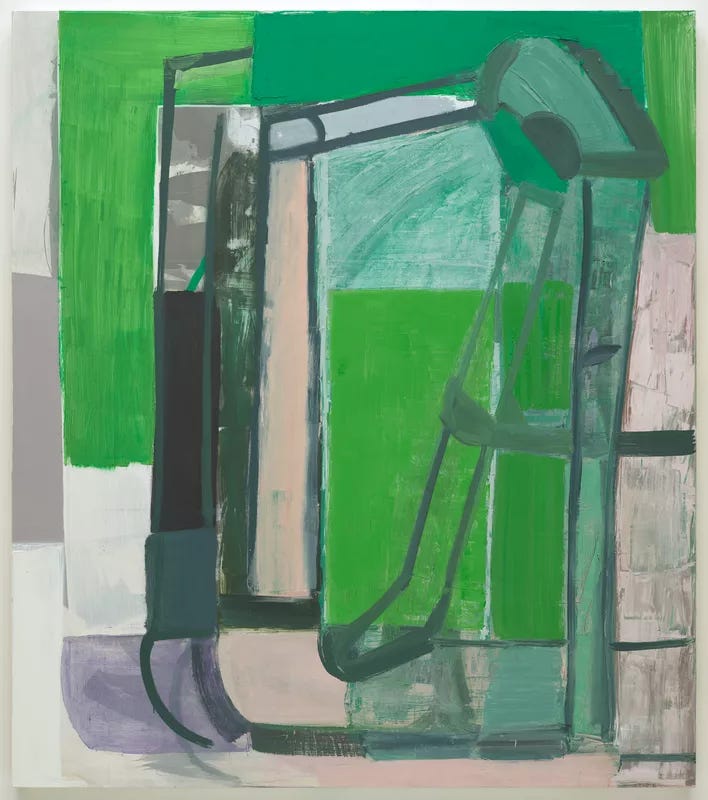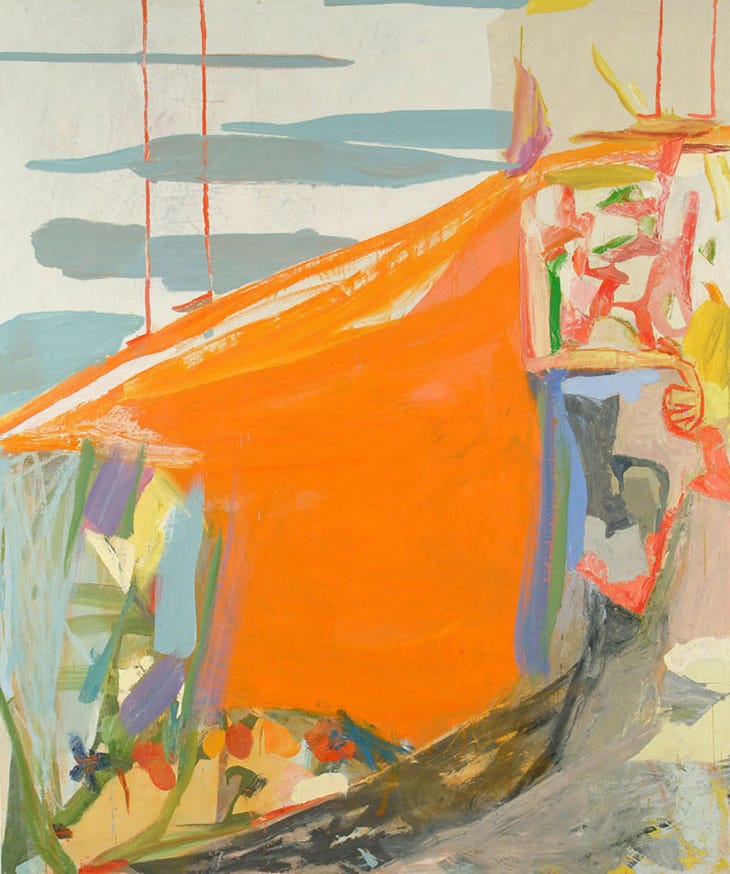Look to: Amy Sillman
"between a thing and a thing becoming"
“The work that I’m most interested in and the place I like to put myself is a space between a thing and a thing becoming, or an idea and a historical object, to sort of place myself in space and time between poles and polarities, and then to see what the process is in those things peeling apart and merging and overlapping and contradicting.”
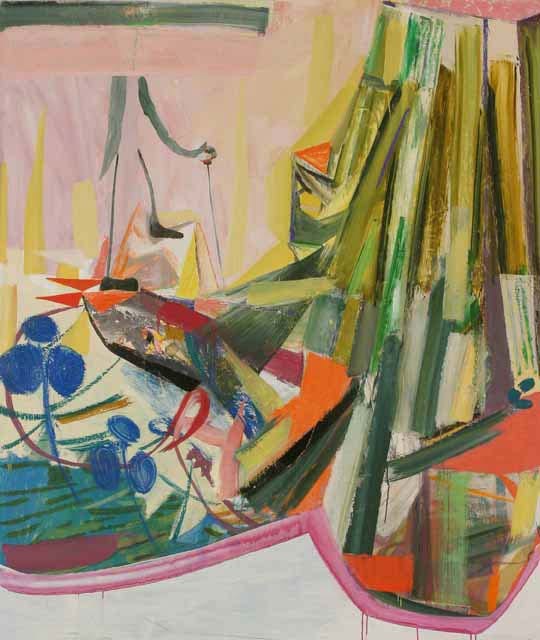
I heard Amy Sillman speak about her work before I ever saw her work, via the podcast A Brush with… and I’ve thought about her almost daily since then. Not just because of the paintings she’s renowned for, but also through her writing, her zines, her curation, and for the way she redefines the concept of inspiration for me, for the relationship she creates with the artists she admires and has learned from.
Discovering Amy’s work was like discovering a gargantuan portal and several tiny little black holes into her messy, awkward, dichotic inner world. She lets you see, and in return, I felt seen.
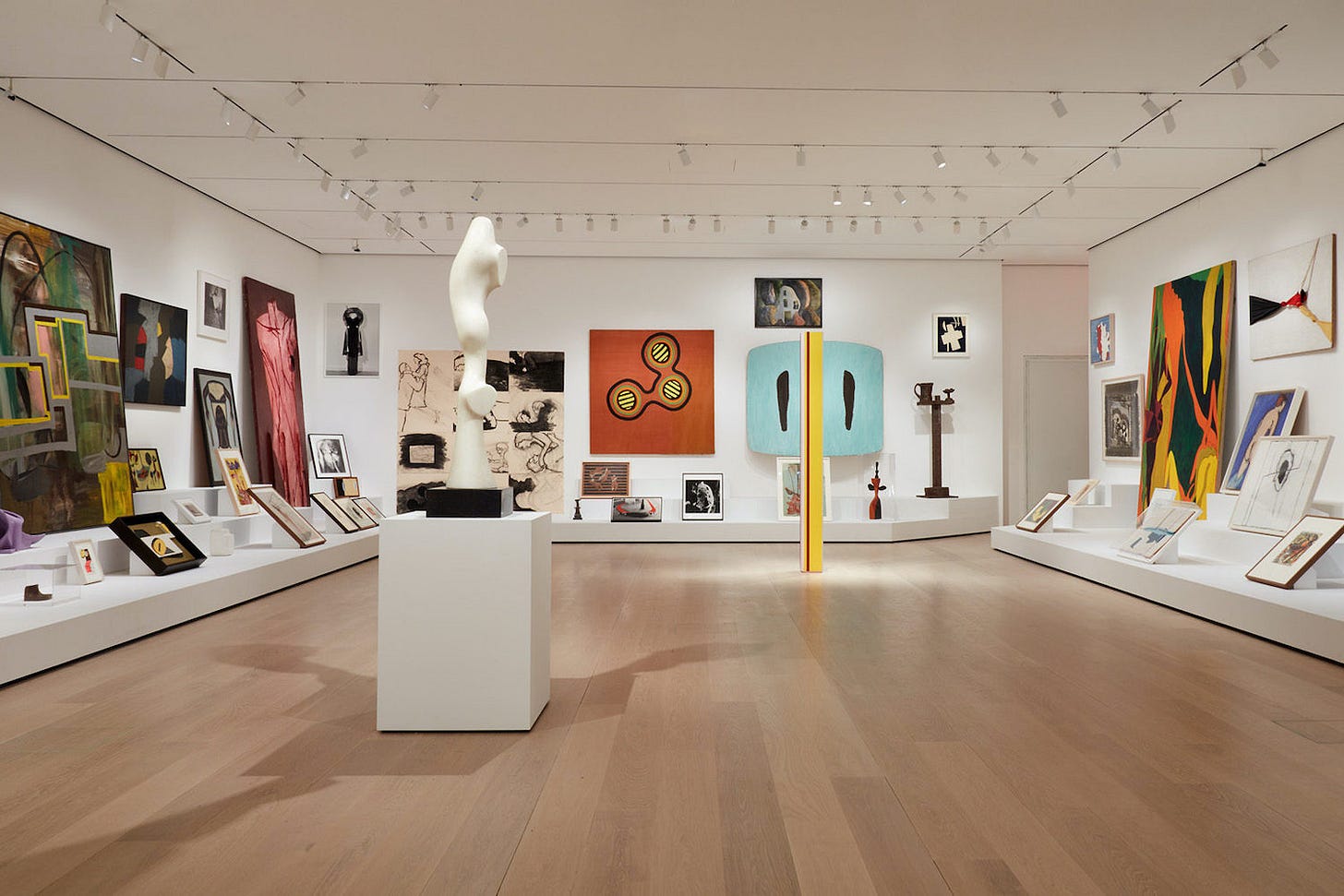
Working across traditional and non traditional mediums, her process is embedded in the exploration of the unknown. For Sillman, the process of making art is the process of moving into knowing through mental, physical, and emotional effort. Laboring. And by sharing her approach, she invites us to get messy too. To embrace the doubt and struggle inherent in bringing something new into this world.
“I work on the floor when I start so that there is no up and down so I don't even know what orientation I'm dealing with right then because I'm working horizontally and I'm also working on oftentimes bigger canvases that I can't … even reach as far on, so I have to spill it or pour it or stretch myself or use like a paper towel to get the paint to move over to the left because I can't reach that far, or tip it or something like that, so I start from blindness in a sense and then something develops. And then that thing gets in trouble and becomes complicated and difficult and then I turn it and get into a kind of fight with it. and then at some point eventually I resolve it. But it can take a really really long time because I kind of like the idea of working with one hand behind my back in a way, to sort of make myself not know or not be good at it or not quite understand, to disorient myself while I'm working is kind of a system in a sense because I'm trying to keep the part where I don't really know what's going to develop going as long as I possibly can.”
Ultimately, her process is pursuit of a metamorphosis, of creating through being and being through creating.
Guests on A Brush with… often have a hard time pinpointing their top-tier influences, but I felt something in my body when Sillman sprinted through her list.
“I always turned to artists who in a sense make their work change into another thing, just by the way they approach it. By which process they enchant, mesmerize, and make you wonder, make you not be able to say what something is. I think that's at the core of the whole thing for me—it's about this kind of transformative, alchemical magic. That's the reason that I think I even look at art: to not know.”
She cites influences as diverse as Philip Guston, John Borofsky, Joan Jonas, Prunella Clough, Howard Hodgkin, Russian cubo-futurists, Gertrude Stein, and Judson Dance Theater. All of them artists who work within this “space of a thing and a thing becoming.”
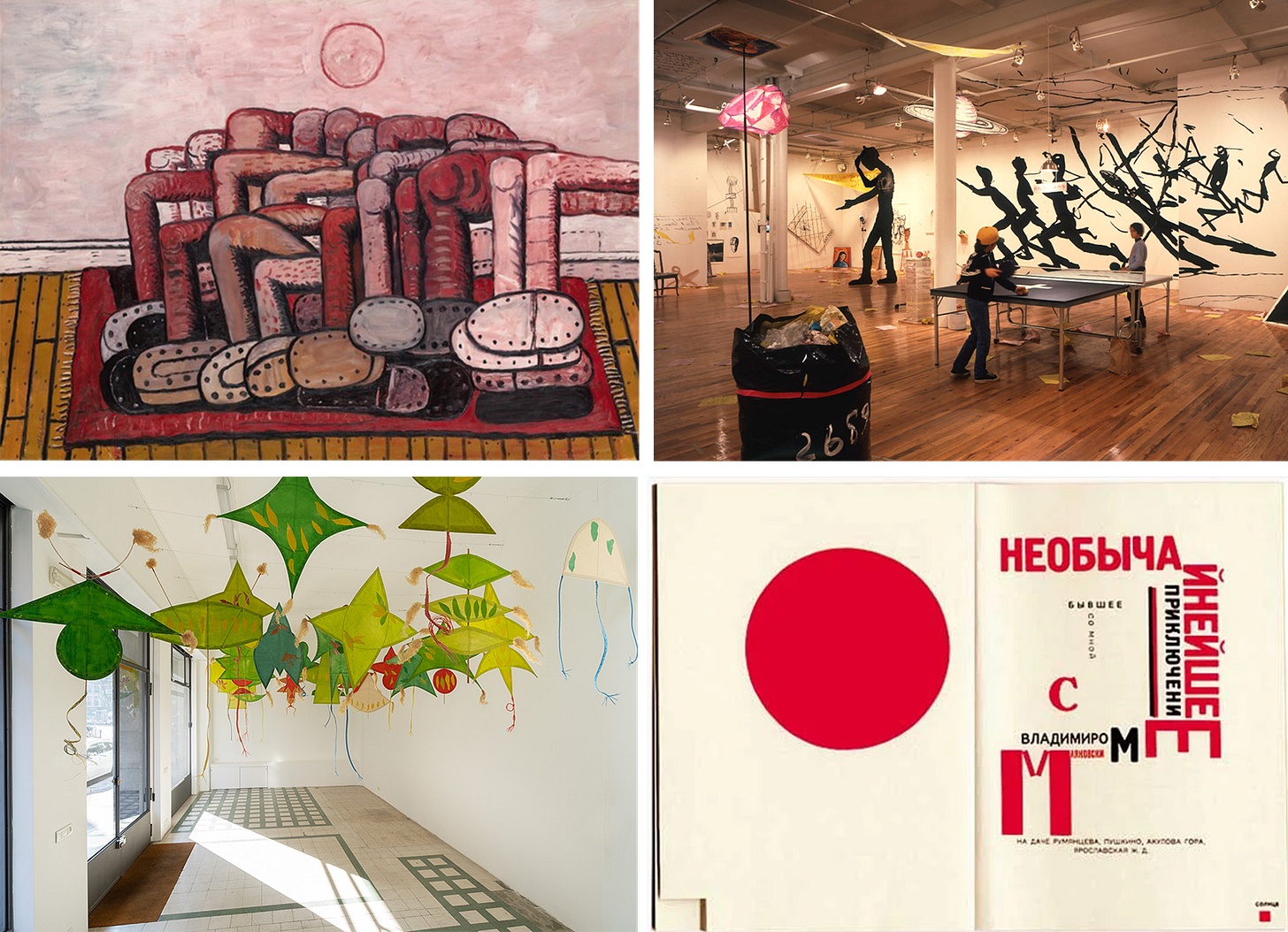
Towards the end of the conversation, she lands on Alice Neel, Louise Bourgeois, and Maria Lassnig as “gateway drugs to one another” and “a triumvirate that is most important to me in art history” through “talking about drawing as painting and talking about personal life as public life.”
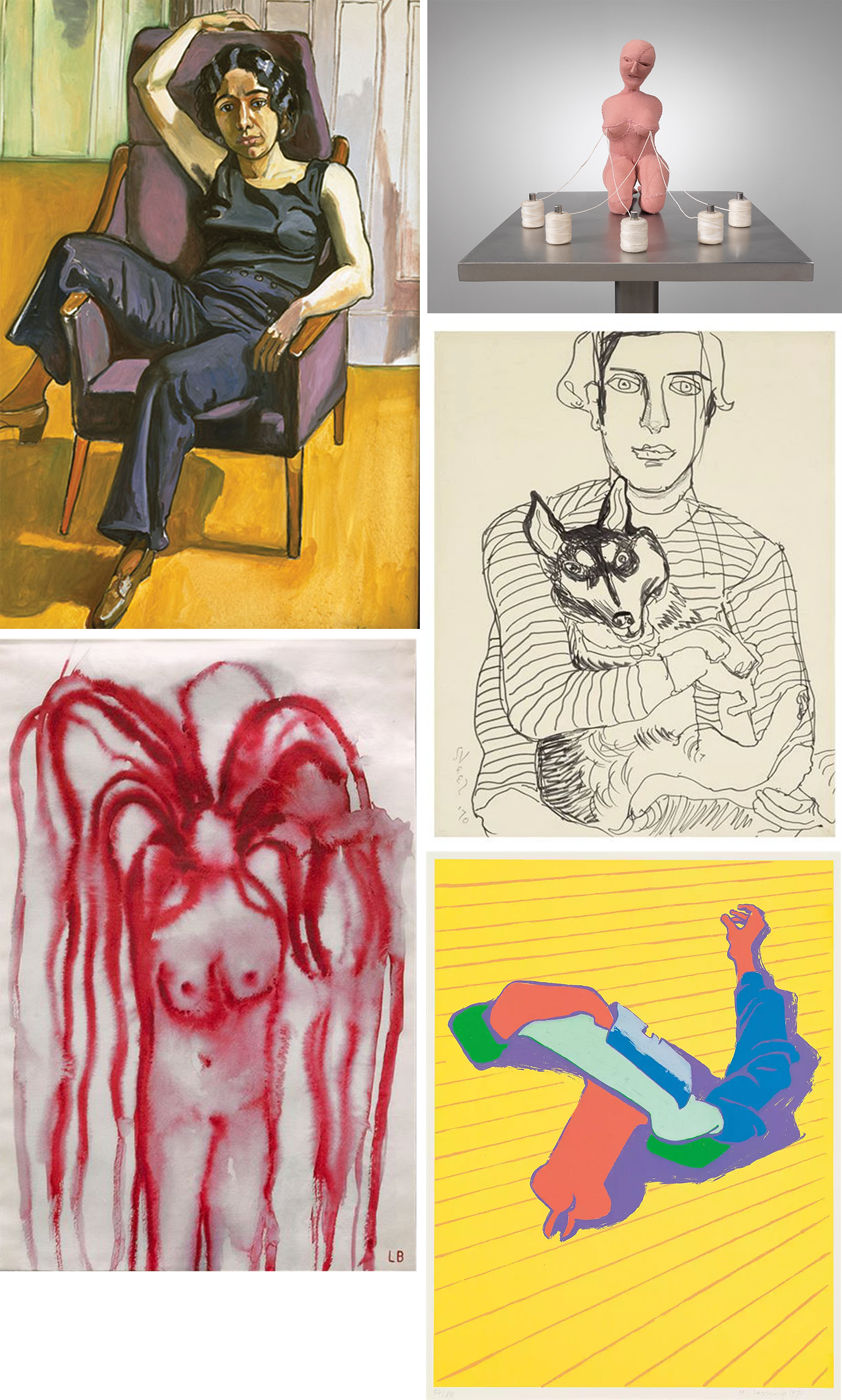
Amy ingests her inspiration. She makes it part of her own flesh in the process of creating something new, something entirely her own—I find this so liberating. My own tendency to fear being over-inspired, to worry about “copying” gets pushed aside to make way for a sort of communion with those I admire.
Amy is, no surprise, also an educator. In her talk for Cooper Union, following her position with the Alex Katz fellowship in 2021, she tells her students, “thank you to the bottom of my heart to my class who has literally filled me with joy and interestingness, conversation and amazing exchanges, during this time we’re living through.” Again, she assumes the role of cultivator, drawing lines between the greats and the new.
After which, she goes on to recite her principles of work, which to me sound like her own version of a Gertrude Stein poem. Fragments that are volumes, in and of themselves.
I have a vision of Amy Sillman as a layer of paint within her own work. Scraped down in areas, built up in others. Rich and deep in pigment and minerals. Sandwiched between the hues and opacities of those around her, outstanding yet indiscernible, singular and multiplicitous, a small bright moment of light, and for this, I’m grateful to be able to look to her.



